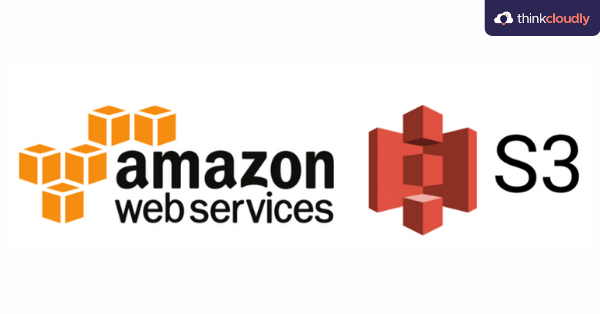Here we are sharing with you some of the AWS S3 interview questions which will help you to crack your interview & get selected in top MNCs of the world. AWS Simple Storage Service is a cloud computing service provided by Amazon Web Services to store and retrieve any amount of data from anywhere in the world. It gives the flexibility to store an unlimited amount of data, at any time, from anywhere in the world, without incurring charges for bandwidth or storage capacity used.
In preparation for AWS interviews in 2024, it’s crucial to be well-versed in AWS S3 (Simple Storage Service) interview questions and answers. When discussing S3 interview questions, candidates often encounter queries regarding data storage strategies, bucket policies, and data transfer mechanisms. To excel in these interviews, it’s essential to understand the fundamentals of S3, including storage classes, data durability, and security features. Additionally, demonstrating expertise in S3-related tools like AWS CLI and AWS SDKs can be advantageous. Familiarizing yourself with common S3 use cases, such as hosting static websites and storing backup data, will further bolster your readiness. By thoroughly reviewing and practicing these S3 interview questions and answers, you’ll be well-prepared to navigate the intricate world of AWS cloud storage and confidently tackle any challenges posed during your interviews.
Here are Some AWS S3 interview questions and answers
AWS S3 Interview Preparation and Course: Elevating Your Storage Expertise
Preparing for an AWS S3 interview involves studying a range of specific S3 interview questions, which focus on testing your understanding of Amazon S3 storage and its applications. These questions typically cover topics like S3 bucket configurations, data management strategies, and security considerations. Additionally, enrolling in an AWS S3 course offers a structured way to deepen your knowledge. This course will guide you through the intricacies of Amazon S3, covering aspects like data storage classes, versioning, and integration with other AWS services. Combining the insights gained from both interview question preparation and an AWS S3 course will equip you with the expertise needed to confidently discuss, implement, and optimize Amazon S3 storage solutions.
1. What is AWS S3?
Amazon S3 (Simple Storage Service) provides object storage, which is designed for storing and recovering an arbitrary amount of information or data from anywhere over the internet. This storage is provided through a web services interface. It offers 99.999999999% durability and 99.99% availability of objects. It can also store computer files up to 5 terabytes in size.
2. What are the benefits of AWS Simple Storage Service?
- Durability: It gives 99.999999999 percent SLA.
- Cheaper: It supports a variety of storage classes. They range from those files that need to be accessed more frequently, like caching, to files that rarely change, like snapshots.
- Scalability: Storage resources can be easily scaled up or down based on your organization’s needs.
- Availability: The availability of objects on S3 is 99.99 percent
- Security: It offers a robust suite of tools for access management and encryption that provide enhanced security.
- Flexibility: The Simple Storage Service is perfect for a wide range of uses, including data storage, backups, software delivery, archiving, disaster recovery, hosting websites, mobile applications, IoT devices, and much more.
3. What is the use of AWS S3?
S3 is Amazon’s object storage service. Using Amazon Simple Storage Service, we can store and retrieve any amount of data from anywhere on the internet at any time.
Build Your Career as a
AWS Solution Architect
- Live Projects
- Resume / Interview Preparation

4. What is an Object in AWS S3?
The Amazon S3 object store lets you store any number of objects using unique keys. The objects can be stored in one or more buckets, and each bucket can hold up to 5 TB of data.
5. What is Key in AWS S3?
Keys are unique identifiers of objects within a bucket. Each bucket has exactly one key. An object is uniquely identified by its bucket, object key, and optionally, version ID (if Simple Storage Service Versioning is enabled for the bucket). As a result, you can think of Amazon Simple Storage Service as a basic mapping between “bucket + key + version” and the actual object.
6. Explain S3 Versioning.
The Amazon S3 Versioning feature allows you to keep multiple variants of the same object in the same bucket. Objects stored in S3 buckets can be preserved, retrieved, and restored with Simple Storage Service Versioning. It is easy to recover from both unintentional user actions and application failures.
7. What is Bucket Policy?
Bucket policies allow you to grant access permissions to objects within your bucket by using AWS IAM policies. A bucket policy can only be associated with the bucket owner. An owner of a bucket can assign permissions to any object in the bucket that is attached to the bucket.
You may want to check step by step guide to create S3 bucket policy.
8. What are Access control lists (ACLs)?
The ACL allows you to grant read-only and write-only access to individual buckets and objects to authorized users. ACLs are attached to buckets and objects as sub-resources. ACLs are an older access control system for defining which AWS accounts or groups are granted access and the type of access.
Boost your earning potential with AWS expertise. Explore our certified AWS Courses for a high-paying career
9. How large can a Simple Storage Service bucket be?
You can store an unlimited amount of data and objects in a Simple Storage Service bucket. The size of a single Amazon S3 object can range from 0 bytes to 5 terabytes. An object of around 5 GB can be uploaded in a single upload request but Multipart Upload must be enabled.
10. Explain the benefits of S3 versioning.
We can store multiple variants of an object in a bucket by versioning it. An object can be restored to a previous or specific version by versioning. If an object is deleted or accidentally overwritten, versioning can be used to recover it.
11. How to configure S3 Versioning on a Bucket?
Versioning helps you keep multiple versions of an object in one place. Follow these steps to enable versioning on an S3 bucket.
- Login to your AWS account.
- Choose Simple Storage Service service.
- Choose a bucket for which versioning should be enabled.
- Go to the properties tab.
- Select versioning from properties.
- Click on the OK button to enable versioning.
12. Is Simple Storage Service considered DFS?
Simple Storage Service is not a distributed file system, but rather a binary object-store. It is structured like a filesystem and is often used like one. Each bucket is a new database (meaning, folder), with keys as folder paths and values as binary objects (i.e. files).
13. How to create an S3 bucket?
To create an AWS S3 bucket check our solution blog for the same.
14. Can I Upload Files Using The AWS Console?
Yes, you can use either of two ways to upload files using AWS Console. One way is by clicking on Objects and selecting your bucket, then uploading a file to it. The other way is by navigating through a bucket’s properties. This is useful if you need to include objects that are not visible in your console, such as large audio or video files.
15. What is the command to list objects in the Simple Storage Service bucket?
To list all files or objects under a specified directory or prefix, use the aws s3 ls –recursive command on the AWS CLI.
16. What are the Storage Classes available in Amazon S3?
- S3 Standard
- S3 Standard IA
- S3 one zone-infrequent access
- S3 Glacier
17. Which storage class does AWS S3 use by default?
Standard
18. What are the ways to manage access for Amazon S3 buckets?
- IAM helps manage Users, Groups, and Roles.
- ACL helps manage objects via access control lists.
- S3 Access Points Helps manage data sets using access points specific to each application.
- Bucket policies help in managing resources and permissions.
19. How do I delete an AWS S3 bucket?
- Log in to the Amazon Web Services Management Console.
- Select the Simple Storage Service.
- Locate the bucket you wish to delete.
- Press the delete button. AWS will ask you to type the bucket name you wish to delete.
- Enter the bucket name and click Confirm.
20. What is CloudFront in Amazon S3?
CloudFront is a content delivery web service. CloudFront provides fast, cost-effective delivery of websites, videos, APIs, images, and applications to users around the world.
Get started on your IT career with AWS Certifications
Amazon Web Services cloud-computing platform is, by far, one of today’s most disruptive technologies. AWS certifications are invaluable, not only because they signal to hiring managers that you know your stuff, but also because AWS Cloud competencies are in huge demand in today’s job market.
There is a strong likelihood that acquiring an AWS certification will lead to a lucrative career, learn everything you need to know about AWS and become an AWS cloud practitioner. Check our job-oriented AWS Courses to get started.
Final Thoughts:
That’s all for this blog, we’ve discussed the most common AWS S3 interview questions and answers. We’re creating a series of blogs on AWS interview questions dedicated to the different services of AWS. Keep checking back, learn more, and good luck with your interviews!












